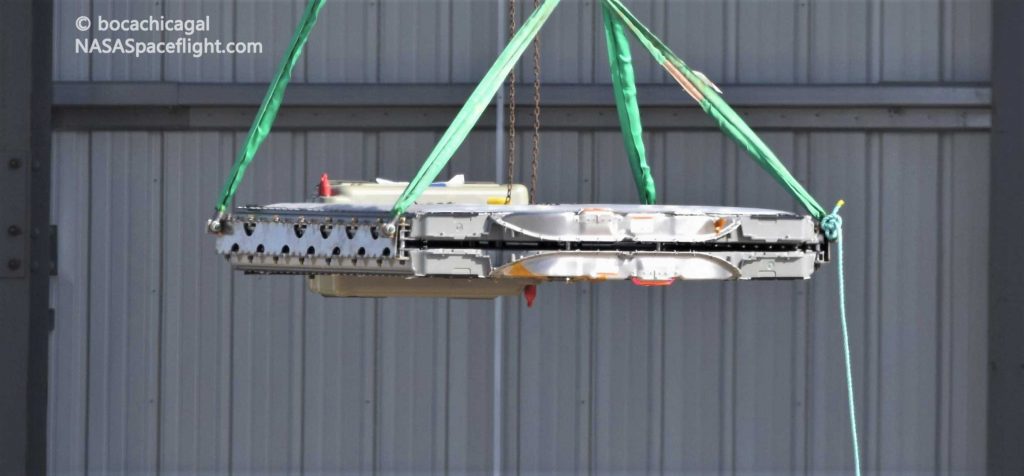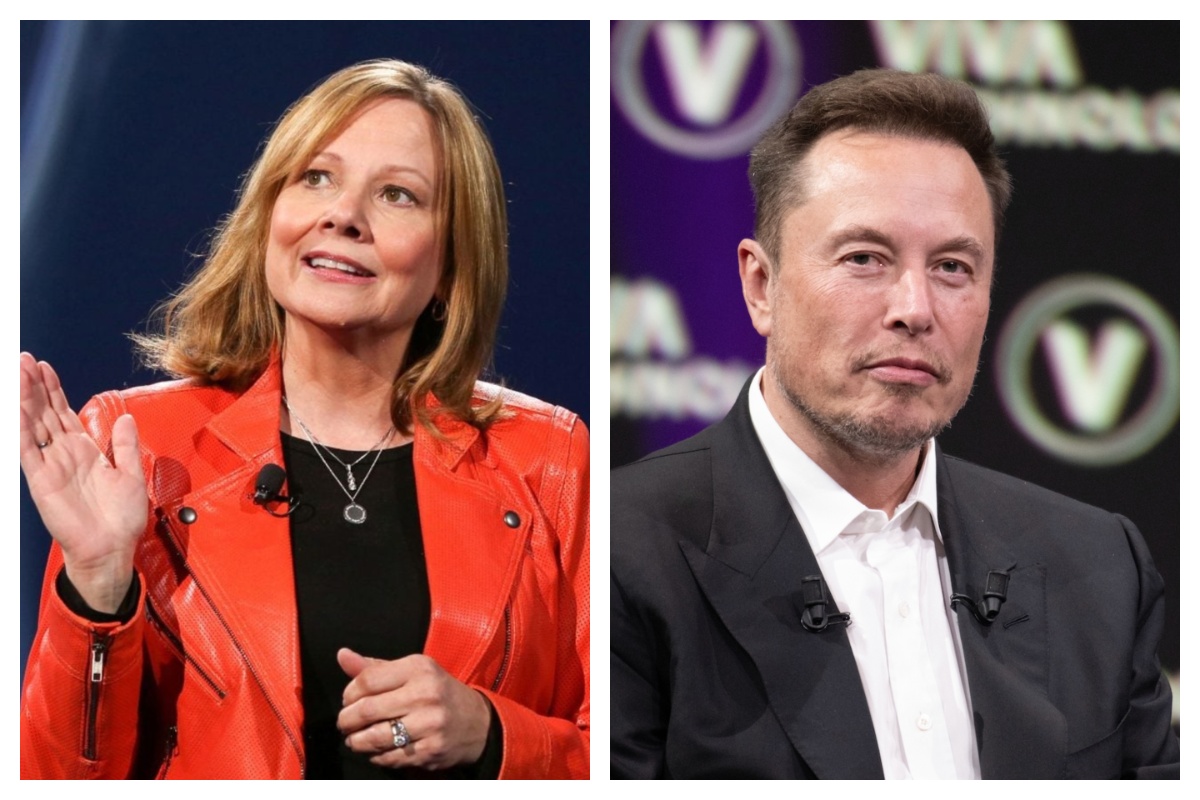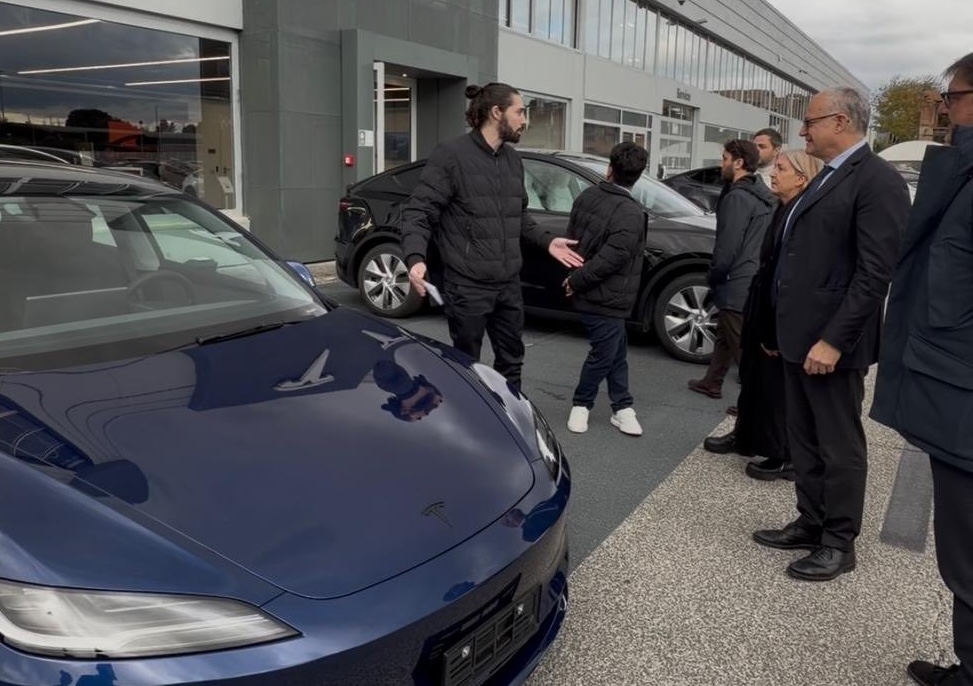News
SpaceX Starship outfitted with Tesla battery packs and motors
Following in the footsteps of the late Mk1 vehicle, SpaceX’s latest Starship prototype has been outfitted with several Tesla battery packs and motors over the last few weeks.
CEO Elon Musk has confirmed in the past that SpaceX intends to try to use Tesla batteries to power Starship rockets and Tesla motors to drive the ships’ large aerodynamic control surfaces. By all appearances, a Tesla Model S motor’s appearance on the exterior of a Starship prototype recently moved to the launch pad is a first for SpaceX. However, in 2019, SpaceX at one point planned to use and even installed battery packs on Starship Mk1 components before the ship was prematurely destroyed during testing. The nosecone those battery packs were installed in still sits in the middle of SpaceX’s growing Boca Chica rocket factory.
For Starship SN3, the purpose of its ~200 kWh of battery power is rather self-explanatory. The purpose of the Tesla Model S motor recently installed on its side is much less clear.


SpaceX is in the midst of preparing Starship SN3 for its first tests after assembling the rocket from next to nothing in less than a month. SpaceX transported the building-sized prototype a mile down the road to its Boca Chica launch site on March 29th, where dozens of workers have been poring over it day and night ever since. SpaceX originally wanted to attempt the ship’s first two tests yesterday, April 1st, but the scheduled times have come and gone while work continues. Several backup windows are ready on April 2nd, beginning shortly before this article went live (1am CDT, 06:00 UTC).
Regardless, with any rocket prototype, test schedules can be extremely fluid and are always liable to change. While SpaceX relies heavily on agile development strategies, beginning with a minimum viable product and iterating to something approaching feature-complete, there is some value in not turning the “move fast and break stuff” dial to 100%. In the case of Starship, the equivalent of tens to hundreds of thousands of work hours and several million dollars of hardware go into each prototype – incredibly cheap on the scale of aerospace development norms but still a significant chunk of change and effort. A few days or weeks of delays are an annoyance that can be suffered if it better guarantees a successful test, versus the alternative of potentially rushing and cutting corners.

SpaceX is now up to roughly five days of delays while preparing Starship SN3 for testing. Originally scheduled as early as April 1st, SpaceX has moved a planned Raptor engine static fire test to no earlier than (NET) April 6th, to be followed no fewer than several days later by a 150m (500 ft) hop test. Of course, before it can safely attempt its first static fire (or hop), SpaceX needs to verify that Starship SN3 – finished just days ago – is up to the task.
Enter Tesla hardware. During ground testing, Starship will likely be continuously connected to ground power sources. It’s also possible that SpaceX has chosen to use its Tesla battery packs as the main power source to insulate it from local outages. Either way, if or when Starship SN3 makes it to flight tests, the battery packs would power the ship’s onboard avionics, landing legs, and any other necessary equipment. That latter category may be where Starship’s apparent Model S motor comes in.

While it could simply be an early implementation test of the Tesla motors SpaceX wants to use to actuate Starship flaps and fins, there are no signs that SN3 will be outfitted with updated flaps and aerodynamic control surfaces more generally. For low-velocity testing, they’re simply unnecessary. Instead, it’s more likely that this Tesla motor is somehow involved in Starship’s autogenous pressurization system, a method of pressurizing tanks with the liquids they contain. Autogenous pressurization relies on a small portion of propellant (liquid oxygen and methane for Starship) being siphoned off and heated until it turns to gas. That oxygen or methane gas is then fed back into the tank it came from, keeping it at the pressure needed to feed Starship’s Raptor engines.
Autogenous pressurization is significantly more complex than the far more common use of helium or nitrogen pressurization systems. An electric pump could potentially be useful at several points throughout the process. Pump mystery aside, tune in to LabPadre’s 24/7 livestream below to follow along as SpaceX prepares to put Starship SN3 to the test for the first time.

Elon Musk
GM CEO Mary Barra says she told Biden to give Tesla and Musk EV credit
“He was crediting me, and I said, ‘Actually, I think a lot of that credit goes to Elon and Tesla…You know me, Andrew. I don’t want to take credit for things.”

General Motors CEO Mary Barra said in a new interview on Wednesday that she told President Joe Biden to credit Tesla and its CEO, Elon Musk, for the widespread electric vehicle transition.
She said she told Biden this after the former President credited her and GM for leading EV efforts in the United States.
During an interview at the New York Times Dealbook Summit with Andrew Ross Sorkin, Barra said she told Biden that crediting her was essentially a mistake, and that Musk and Tesla should have been explicitly mentioned (via Business Insider):
“He was crediting me, and I said, ‘Actually, I think a lot of that credit goes to Elon and Tesla…You know me, Andrew. I don’t want to take credit for things.”
GM CEO Mary Barra said to Andrew Sorkin at the New York Times Dealbook Summit that she pulled President Biden aside and said Tesla CEO @elonmusk deserved the credit for EVs:
“He was crediting me, and I said, ‘Actually, I think a lot of that credit goes to Elon and Tesla,'” Barra… pic.twitter.com/OHBTG1QfbJ
— TESLARATI (@Teslarati) December 3, 2025
Back in 2021, President Biden visited GM’s “Factory Zero” plant in Detroit, which was the centerpiece of the company’s massive transition to EVs. The former President went on to discuss the EV industry, and claimed that GM and Barra were the true leaders who caused the change:
“In the auto industry, Detroit is leading the world in electric vehicles. You know how critical it is? Mary, I remember talking to you way back in January about the need for America to lead in electric vehicles. I can remember your dramatic announcement that by 2035, GM would be 100% electric. You changed the whole story, Mary. You did, Mary. You electrified the entire automotive industry. I’m serious. You led, and it matters.”
People were baffled by the President’s decision to highlight GM and Barra, and not Tesla and Musk, who truly started the transition to EVs. GM, Ford, and many other companies only followed in the footsteps of Tesla after it started to take market share from them.
Elon Musk and Tesla try to save legacy automakers from Déjà vu
Musk would eventually go on to talk about Biden’s words later on:
“They have so much power over the White House that they can exclude Tesla from an EV Summit. And, in case the first thing, in case that wasn’t enough, then you have President Biden with Mary Barra at a subsequent event, congratulating Mary for having led the EV revolution.”
In Q4 2021, which was shortly after Biden’s comments, Tesla delivered 300,000 EVs. GM delivered just 26.
News
Tesla Full Self-Driving shows confident navigation in heavy snow
So far, from what we’ve seen, snow has not been a huge issue for the most recent Full Self-Driving release. It seems to be acting confidently and handling even snow-covered roads with relative ease.

Tesla Full Self-Driving is getting its first taste of Winter weather for late 2025, as snow is starting to fall all across the United States.
The suite has been vastly improved after Tesla released v14 to many owners with capable hardware, and driving performance, along with overall behavior, has really been something to admire. This is by far the best version of FSD Tesla has ever released, and although there are a handful of regressions with each subsequent release, they are usually cleared up within a week or two.
Tesla is releasing a modified version of FSD v14 for Hardware 3 owners: here’s when
However, adverse weather conditions are something that Tesla will have to confront, as heavy rain, snow, and other interesting situations are bound to occur. In order for the vehicles to be fully autonomous, they will have to go through these scenarios safely and accurately.
One big issue I’ve had, especially in heavy rain, is that the camera vision might be obstructed, which will display messages that certain features’ performance might be degraded.
So far, from what we’ve seen, snow has not been a huge issue for the most recent Full Self-Driving release. It seems to be acting confidently and handling even snow-covered roads with relative ease:
FSD 14.1.4 snow storm Ontario Canada pic.twitter.com/jwK1dLYT0w
— Everything AI (@mrteslaspace) November 17, 2025
I found the steepest, unplowed hill in my area and tested the following:
• FSD 14.2.1 on summer tires
• FSD 14.2.1 on winter tires
• Manual drivingBut I think the most impressive part was how FSD went DOWN the hill. FSD in the snow is sublime $TSLA pic.twitter.com/YMcN7Br3PU
— Dillon Loomis (@DillonLoomis) December 2, 2025
Well.. I couldn’t let the boys have all the fun!
Threw the GoPro up and decided to FSD v14.2.1 in the snow. Roads were not compacted like the other day, a little slippery, but overall doable at lower speeds. Enjoy the video and holiday music 🎶
Liked:
Took turns super slow… pic.twitter.com/rIAIeh3Zu3— 🦋Diana🦋 (@99_Colorado) December 3, 2025
Moving into the winter months, it will be very interesting to see how FSD handles even more concerning conditions, especially with black ice, freezing rain and snow mix, and other things that happen during colder conditions.
We are excited to test it ourselves, but I am waiting for heavy snowfall to make it to Pennsylvania so I can truly push it to the limit.
News
Tesla hosts Rome Mayor for first Italian FSD Supervised road demo
The event marked the first time an Italian mayor tested the advanced driver-assistance system in person in Rome’s urban streets.

Tesla definitely seems to be actively engaging European officials on FSD’s capabilities, with the company hosting Rome Mayor Roberto Gualtieri and Mobility Assessor Eugenio Patanè for a hands-on road demonstration.
The event marked the first time an Italian mayor tested the advanced driver-assistance system in person in Rome’s urban streets. This comes amid Tesla’s push for FSD’s EU regulatory approvals in the coming year.
Rome officials experience FSD Supervised
Tesla conducted the demo using a Model 3 equipped with Full Self-Driving (Supervised), tackling typical Roman traffic including complex intersections, roundabouts, pedestrian crossings and mixed users like cars, bikes and scooters.
The system showcased AI-based assisted driving, prioritizing safety while maintaining flow. FSD also handled overtakes and lane decisions, though with constant driver supervision.
Investor Andrea Stroppa detailed the event on X, noting the system’s potential to reduce severe collision risks by up to seven times compared to traditional driving, based on Tesla’s data from billions of global fleet miles. The session highlighted FSD’s role as an assistance tool in its Supervised form, not a replacement, with the driver fully responsible at all times.
Path to European rollout
Tesla has logged over 1 million kilometers of testing across 17 European countries, including Italy, to refine FSD for local conditions. The fact that Rome officials personally tested FSD Supervised bodes well for the program’s approval, as it suggests that key individuals are closely watching Tesla’s efforts and innovations.
Assessor Patanè also highlighted the administration’s interest in technologies that boost road safety and urban travel quality, viewing them as aids for both private and public transport while respecting rules.
Replies on X urged involving Italy’s Transport Ministry to speed approvals, with one user noting, “Great idea to involve the mayor! It would be necessary to involve components of the Ministry of Transport and the government as soon as possible: it’s they who can accelerate the approval of FSD in Italy.”








